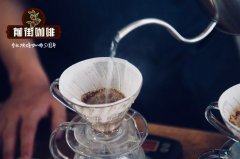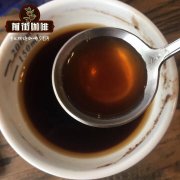Ethiopia | Jierena Anbayasha Modokale washing Plant sunbathing Yega Xuefei Jin Lena

Professional coffee knowledge exchange more coffee bean information please follow the coffee workshop (Wechat official account cafe_style)
Ethiopia | Jierena Anbayasha Modokale washing factory sunbathing the flavor of Yerena Sheffield and Jinlena?
Gelana Abaya is sandwiched between Lake Abaya Lake in the west and Yegashafi in the east. Lake Ambaya is the largest lake in southern Ethiopia and provides abundant water resources for the washing plant, while the coffee-producing area of Jerena Ambaya is located in the foothills of the high mountains to the east of the lake, which separates Lake Jakassefi and Lake Ambaya. Yirgacheffe is located in the Gedeo region of southern Ethiopia. The jurisdiction of this area is well known as Yegashefi and Kochere. Because the coffee produced by Yirgacheffe has a unique flavor and is widely loved, it has its own classification and has always occupied a place in the global boutique coffee market. Yirgacheffe, located in Sidama province, is a small town itself, and there are three small producing areas Wenago, Kochere and Gelena Abaya nearby. Because of the new trading and grading system for the flavor of coffee, three new by-production areas such as Wenago, Kochere and Genlena/Abaya have been added, which shows that the flavor of these three producing areas is very meticulous and can be subdivided. Golden Reina Ambaya (Gelana Abaya) is located in Lake Abaya in the west and Yejasuefei in a small production area in the east. The coffee beans are harvested from local small coffee farmers, which are composed of a large number of small coffee farmers with an average farming area of about 9000-10000 hectares, with an altitude of about 1700-1900 meters. Coffee varieties are mainly a mixture of Typica and Heirloom (native species). This producing area has five advanced raw bean processing plants, so it has a high level of performance in the field of raw bean processing, which is praised for its clean and sweet complex flavors of honey and citrus. In the main local production mode, small coffee farmers will harvest red fruit and send it directly to the processing plant of the neighboring cooperative for unified treatment.
The well-known Yejasuefei is actually made up of several communities, which are Kochere, YirgaCheffe, Wenago and Gelana Abaya.
According to the new administrative division, Gelana is further divided into two parts, with Abaya in the north, adjacent to Yegashefi and Venagu, and Gerena (Amba) in the south and adjacent to Kochel. However, after entering the Ethiopian Commodity Exchange (Ethiopia Commodity Exchange; ECX), the coffee produced in the two places is still labeled "Gerena Anbaya".
Gerena Anbaya has four cooperatives, 5643 coffee farmers and two washing plants, whose farmers belong to the Tore aboriginal people, and coffee grows in high-altitude mountains between 1600 and 2300 meters. After the small farmers send the ripe cherries to the washing plant, the washing plant will first screen, eliminate the unqualified fresh fruit, and then enter the washing process. The washing plant has a very clean peeling machine and fermentation trough, fermented ditches, scrubbing with traditional wood pulp to clean the pectin mucus attached to shell beans, and the elegant fragrance of flowers is naturally generated in this process. The washing plant is Shashamo Dukale, located in Hafursa, which is a very popular small producing area that always produces high quality coffee.
After first screening the coffee fruits with graded red cherry color, the treatment plant directly uses water to remove the coffee fruits that are not fruitful floating on the water, and after picking up the coffee fruits with sunken red cherry color, the raw beans with shells are naturally exposed on the scaffolding with a humidity of 12% or less, which will be sent directly to the Ethiopian Commodity Exchange (ECX) warehouse in Awassa. Cup testing, grading and quantity are auctioned, and sun-treated beans are usually stored in the form of shell beans, which are not shelled until they are exported.
Producing area: Borena zone, Yega Xuefei Yirgacheffe Oromia
Secondary production area: Jirana Abaya Gelena Abaya Woreda
Washing plant: Shashamo Dukale washing station of Sasha Modokale washing Plant in Hofsa
Producer: local small coffee farmers
Altitude: 1600-2300 m
Variety: Ethiopian native species Ethiopia Heirloom Varietals
Treatment: washing washed
Flavor description: classic sun style, floral aroma, blueberries, fresh and delicate berries, smooth cream, clean and delicate sour lines. The sour lines are clean and delicate. Light fermented wine, delicate acidity, berries, clean and balanced taste, long, lively and varied fruit.
Qianjie recommended cooking:
Filter cup: Hario V60
Water temperature: 90 degrees
Degree of grinding: small Fuji 3.5
Cooking methods: the ratio of water to powder is 1:15, 15g powder, the first injection of 25g water, 25 s steaming, the second injection to 120g water cut off, waiting for the powder bed water to half and then water injection, slow water injection until 225g water, extraction time about 2:00
Analysis: using three-stage brewing to clarify the flavor of the front, middle and back of the coffee. Because V60 has many ribs and the drainage speed is fast, it can prolong the extraction time when the water is cut off.
Important Notice :
前街咖啡 FrontStreet Coffee has moved to new addredd:
FrontStreet Coffee Address: 315,Donghua East Road,GuangZhou
Tel:020 38364473
- Prev

Panamanian Pokuit area | Belina Manor Organic washing baby Rose Summer Flavor?
Professional coffee knowledge exchange more coffee bean information please follow the coffee workshop (Wechat official account cafe_style) Panamanian Poquet area | Bolina Manor Organic washing baby Rose Summer flavor? Berlina Estate, run by the Casa Ruiz family family, has won numerous awards in the Panamanian raw bean competition
- Next

Why is Rosa coffee so expensive? The source of rose summer coffee how should I drink rose summer coffee?
Professional coffee knowledge exchange more coffee bean information Please pay attention to the coffee workshop (Wechat official account cafe_style) when I heard about Rosa coffee beans, I thought Kyoto also began to grow coffee. Haha, this is a big mistake. In fact, Rosa coffee beans, the original text Geisha or also known as Gesha, happens to be synonymous with Japanese Rosa, so it is called it in Chinese, in fact with Japan.
Related
- Detailed explanation of Jadeite planting Land in Panamanian Jadeite Manor introduction to the grading system of Jadeite competitive bidding, Red bid, Green bid and Rose Summer
- Story of Coffee planting in Brenka region of Costa Rica Stonehenge Manor anaerobic heavy honey treatment of flavor mouth
- What's on the barrel of Blue Mountain Coffee beans?
- Can American coffee also pull flowers? How to use hot American style to pull out a good-looking pattern?
- Can you make a cold extract with coffee beans? What is the right proportion for cold-extracted coffee formula?
- Indonesian PWN Gold Mandrine Coffee Origin Features Flavor How to Chong? Mandolin coffee is American.
- A brief introduction to the flavor characteristics of Brazilian yellow bourbon coffee beans
- What is the effect of different water quality on the flavor of cold-extracted coffee? What kind of water is best for brewing coffee?
- Why do you think of Rose Summer whenever you mention Panamanian coffee?
- Introduction to the characteristics of authentic blue mountain coffee bean producing areas? What is the CIB Coffee Authority in Jamaica?

